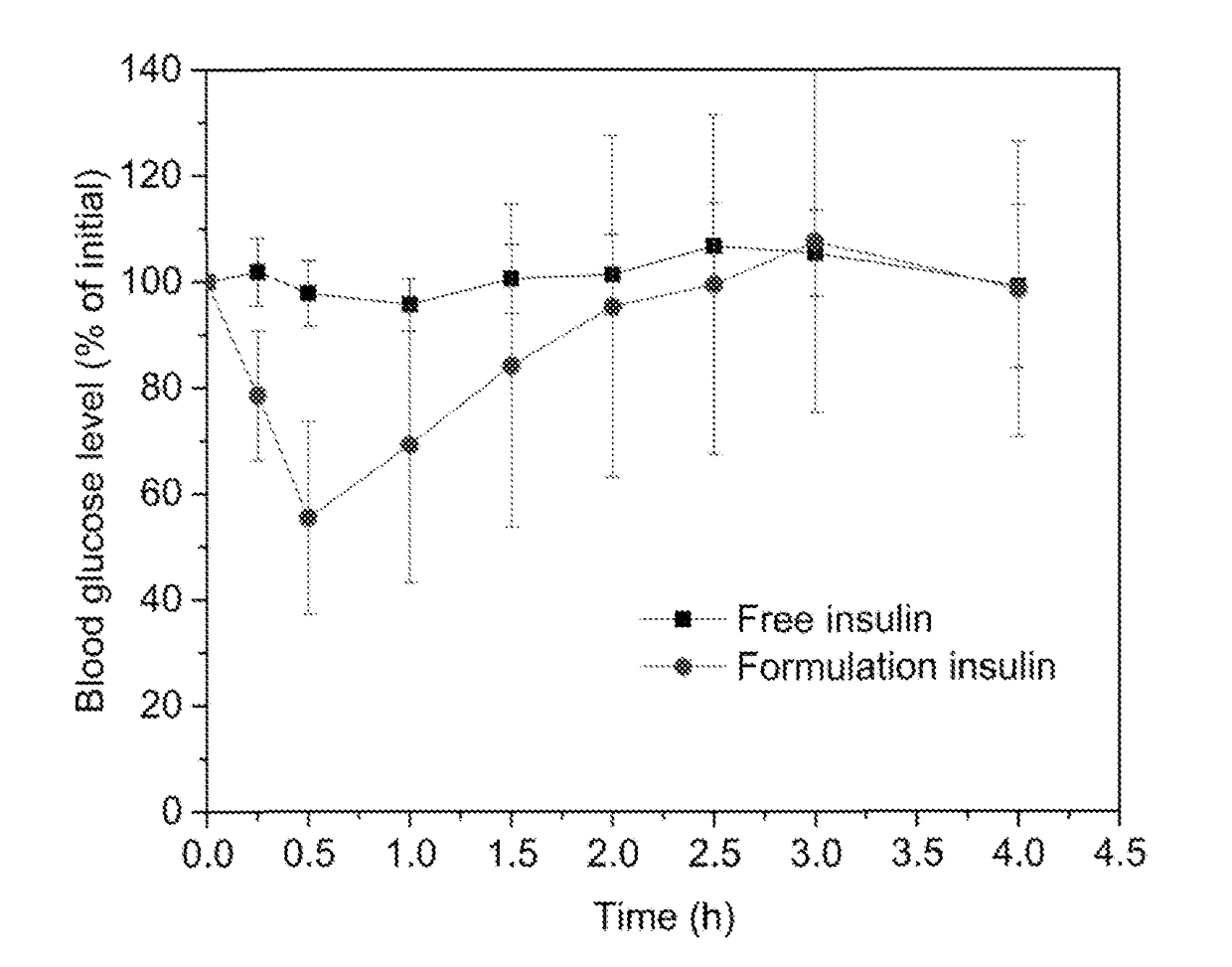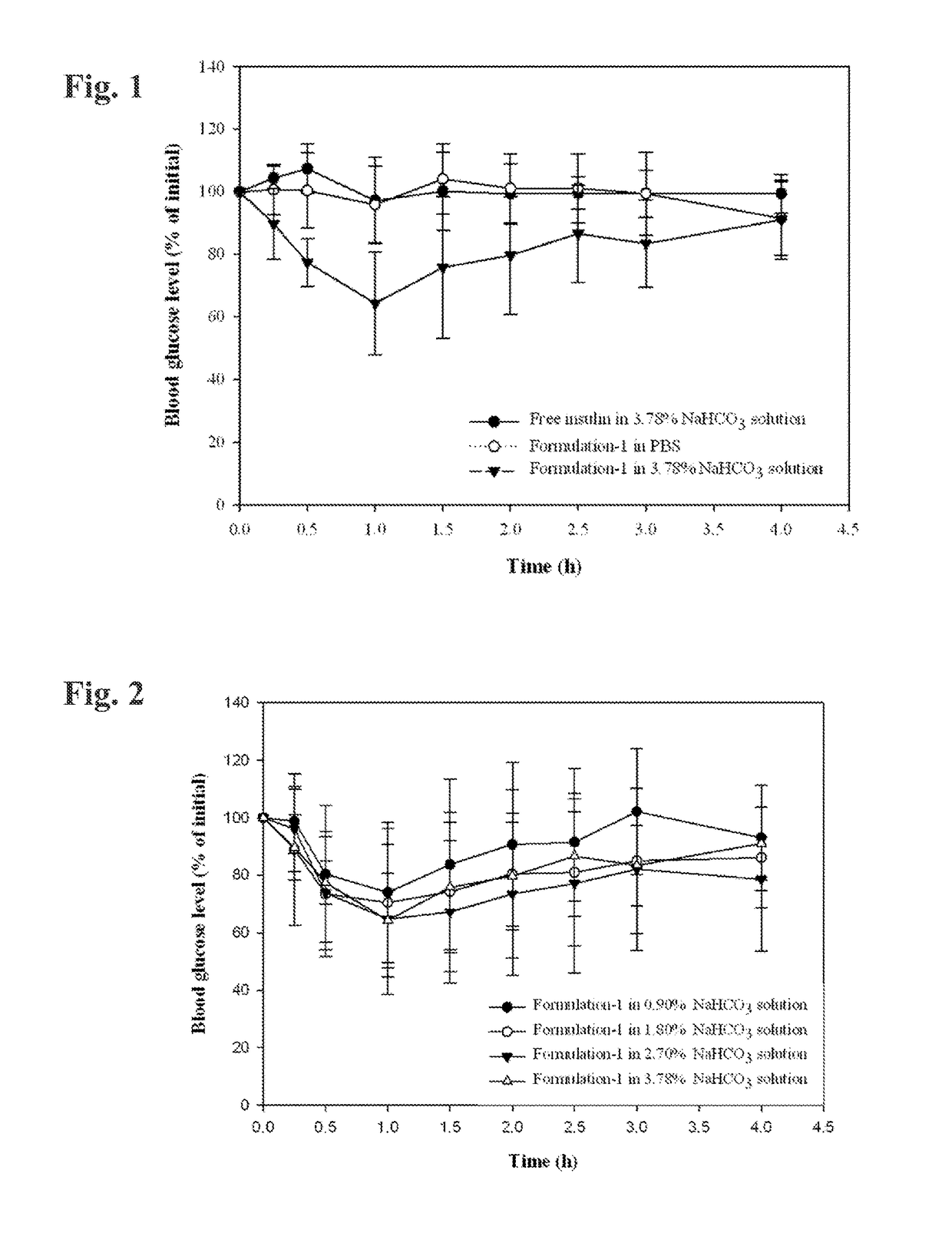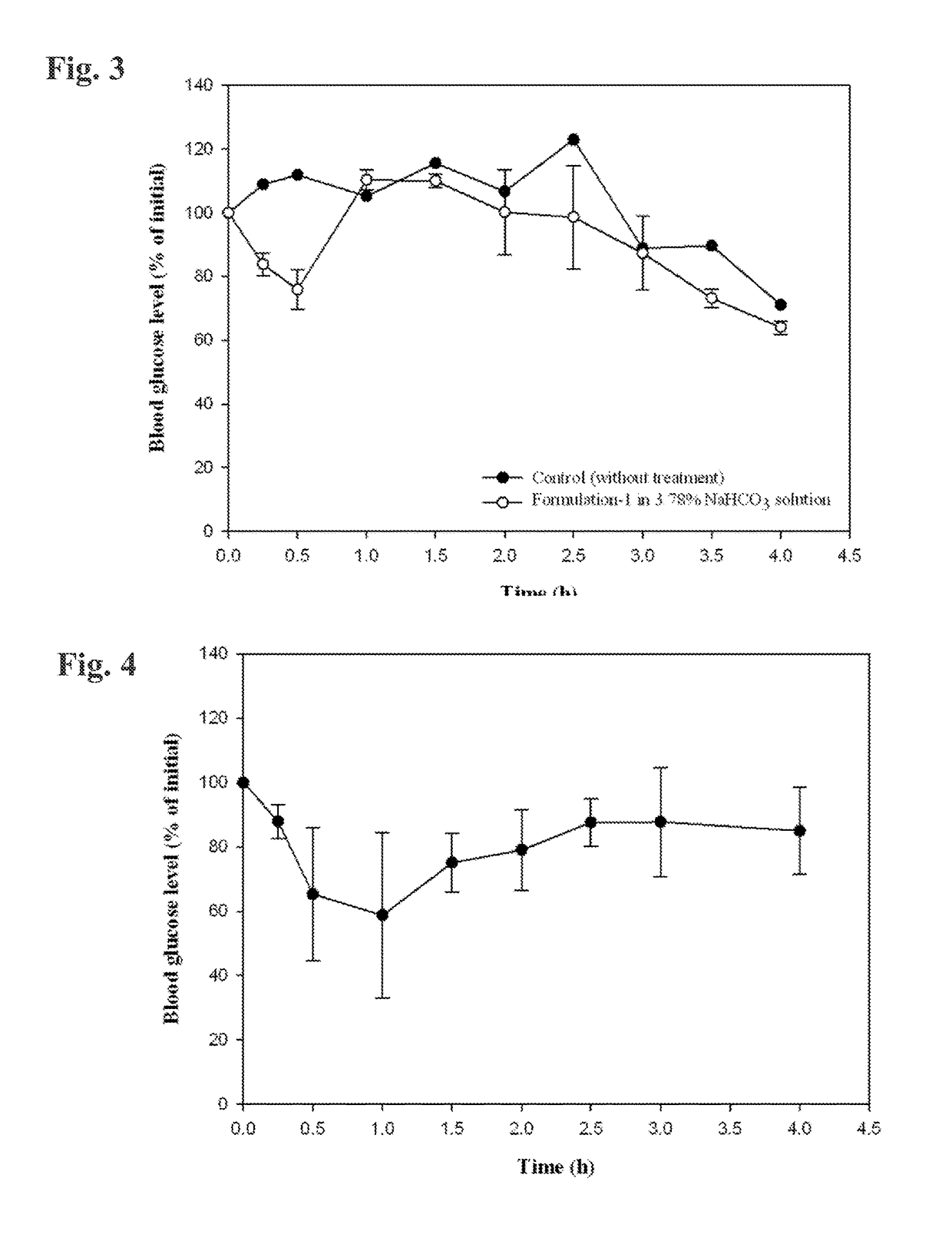Oral Administration of Unstable or Poorly-Absorbed Drugs
a drug, unstable technology, applied in the direction of metabolism disorder, inorganic non-active ingredients, peptide/protein ingredients, etc., can solve the problems of inability to easily absorb drugs with low lipophilicity and/or high molecule weight, inability to inhibit the stability and efficacy of such drugs, and inability to effectively treat diseas
- Summary
- Abstract
- Description
- Claims
- Application Information
AI Technical Summary
Benefits of technology
Problems solved by technology
Method used
Image
Examples
example 1
[0087]Formulations
[0088]Described in this Example are formulations containing insulin
[0089]Each of Formulations 1, 2, and 3 was prepared as follows.
[0090]Non-modified human insulin (28.8 IU / mg) was weighed into a 7 milliliter vial and the indicated quantity of 0.05 normal HCl was added to the vial to dissolve the insulin. A polyol solvent (propylene glycol, glycerol, and / or PEG 400) was added to the vial and the contents were gently stirred to combine the ingredients. Three surfactants were then added to the vial and the contents were gently stirred until a transparent mixture formed. This transparent mixture was suspended in about 160-230 microliteres of a 3.78% (w / w) NaHCO3 solution (a ten-fold dilution), causing emulsification, prior to administration.
[0091]The formulation herein designated Formulation 1 had the following composition:
IngredientFraction % (w / w)Insulin0.850.05N HCl12.76Propylene glycol29.78Labrasol ™51.06Lauroglycol ™ FCC4.26Tween ™ 801.29
[0092]The formulation here...
example 2
[0112]Droplet Size
[0113]An advantage of the formulations described herein is that insulin is contained within the aqueous core of droplets (which may include micelles and / or liposomes) which are spontaneously formed (optionally upon mild agitation) upon contact of the formulation with water or an aqueous solution. Because the size of such droplets influences their ability to traverse gastrointestinal surfaces (and thus affects the rate and extent of bioavailability of a drug contained within the liposomes), the size of droplets formed upon auto-emulsification of formulations described herein was analyzed.
[0114]In separate samples, one part of each of Formulations 1, 2, 3, and 4 was combined 500 parts of distilled water with gentle stirring and permitted to form a dispersion or an emulsion. The size of droplets thus formed was measured using a Zetasizer Nano ZS zeta potential analyzer (Malvern Instruments, Ltd.). The same instrument was used to measure the polydispersity index (PDI) ...
example 3
[0117]Acid Neutralization Studies
[0118]Formulation 1 was diluted ten-fold with a 4.2% (w / w) solution of sodium bicarbonate (i.e., one part Formulation 1 combined with nine parts of bicarbonate solution; final concentration 3.78%). The pH of this diluted composition was 8.2. The pH of 0.1N HCl is 1.2.
[0119]4.0 Milliliters of 0.1N HCl was combined with selected amounts of the diluted composition, and the pH of the resulting combined solution was measured. When HCl was combined with 1.0 milliliter of the diluted composition, the resulting pH was 5.64. When HCl was combined with 1.5 milliliter of the diluted composition, the resulting pH was 6.27. When HCl was combined with 2.0 milliliters of the diluted composition, the resulting pH was 6.48. These results demonstrate the acid-neutralizing effect of the Formulation / antacid combinations described herein. A skilled artisan can select an appropriate amount of antacid to neutralize anticipated amounts of stomach acid in humans and other su...
PUM
| Property | Measurement | Unit |
|---|---|---|
| Temperature | aaaaa | aaaaa |
| Size | aaaaa | aaaaa |
| Size | aaaaa | aaaaa |
Abstract
Description
Claims
Application Information
 Login to View More
Login to View More - R&D
- Intellectual Property
- Life Sciences
- Materials
- Tech Scout
- Unparalleled Data Quality
- Higher Quality Content
- 60% Fewer Hallucinations
Browse by: Latest US Patents, China's latest patents, Technical Efficacy Thesaurus, Application Domain, Technology Topic, Popular Technical Reports.
© 2025 PatSnap. All rights reserved.Legal|Privacy policy|Modern Slavery Act Transparency Statement|Sitemap|About US| Contact US: help@patsnap.com



